The graph between angle of deviation and angle of incidence (i) for a triangular prism is represented by:
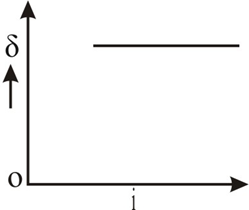
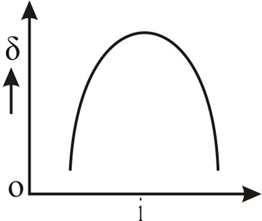
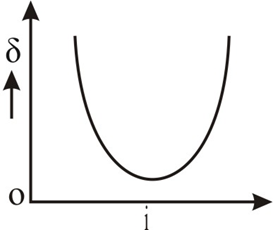
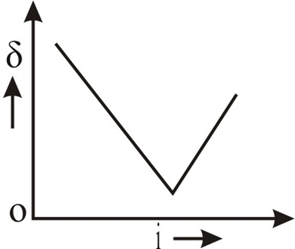

Important Questions on Ray Optics
A thin convex lens made from crown glass has focal Iength . When it is measured in two different liquids having refractive indices and , it has the focal lengths and respectively. The correct relation between the focal lengths is:
Monochromatic light is incident on a glass prism of angle . If the refractive index of the material of the prism is , a ray, incident at an angle $\theta$, on the face would get transmitted through the face of the prism provided.
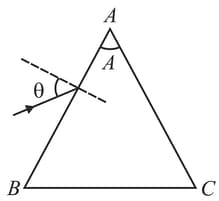
Consider a tank made of glass (refractive index ) with a thick bottom. It is filled with a liquid of refractive index A student finds that, irrespective of what the incident angle (see figure) is for a beam of light entering the liquid, the light reflected from the liquid glass interface is never completely polarized. For this to happen, the minimum value of is:
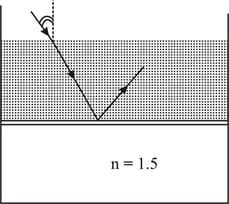
A convex lens is put from a light source and it makes a sharp image on a screen, kept from the lens. Now a glass block (refractive index ) of thickness is placed in contact with the light source. To get the sharp image again, the screen is shifted by a distance . Then is:
